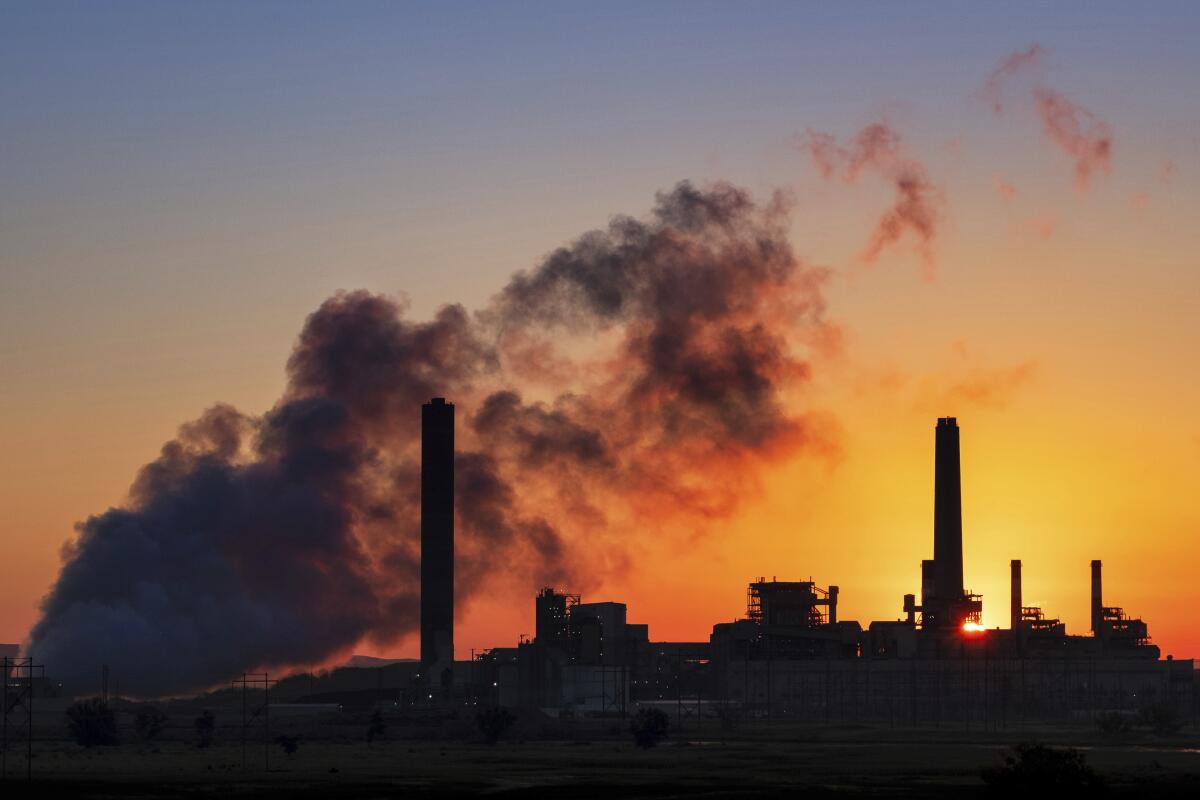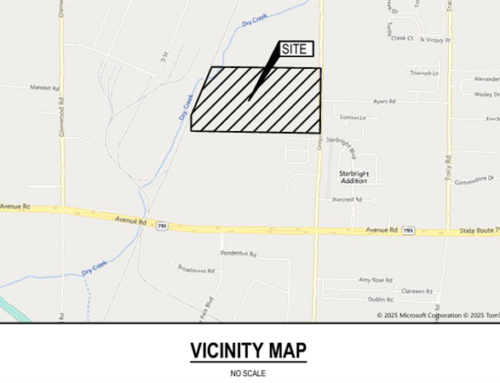Commentary: Warren Buffett’s successor got his start selling clean energy. Now he defends
May 8, 2025
Warren Buffett has invested tens of billions of dollars in fossil fuels, propping up some of the nation’s dirtiest coal plants as well as major oil and gas suppliers even as the climate crisis threatens human civilization.
But when Buffett announced last weekend that he plans to retire later this year, he recommended that Berkshire Hathaway’s board name a new chief executive with a long, little-known history in renewable power.
Newsletter
You’re reading Boiling Point
Sammy Roth gets you up to speed on climate change, energy and the environment. Sign up to get it in your inbox twice a week.
You may occasionally receive promotional content from the Los Angeles Times.
Greg Abel, who leads Berkshire’s energy division, joined the staff of California Energy Co., or CalEnergy, in 1992. The firm primarily owned geothermal power plants that produced 24/7, pollution-free electricity by drilling into pockets of underground heat — which are plentiful in California. Most of CalEnergy’s facilities sold electricity to Southern California Edison and were located at the Salton Sea or the China Lake Naval Air Weapons Station.
Abel scaled the ranks, from controller to chief accounting officer to president. In 1999, CalEnergy acquired Iowa utility company MidAmerican for $4 billion. Soon after, Berkshire led a group of investors in a $9-billion purchase of MidAmerican, bringing Buffett into the energy business — and Abel into the legendary investor’s orbit.
A quarter-century later, Berkshire still owns the Salton Sea geothermal fleet. But Abel has embraced oil and gas.
And like his mentor, he sees a long, profitable future for coal.

Greg Abel, chair of Berkshire Hathaway Energy, in July 2024.
(David Paul Morris / Bloomberg via Getty Images)
At Berkshire Hathaway’s annual meeting in Buffett’s hometown of Omaha on Saturday, a 17-year-old high school student asked Abel about a Reuters investigation showing that Berkshire’s coal plants emit more nitrogen oxide pollution than those of any other major U.S. company. Nitrogen oxides are poisonous gases that help form lung-damaging soot particles, which can travel hundreds of miles.
Coal plants are also the dirtiest fossil fuel in terms of planet-warming carbon dioxide emissions. What could Abel say, the student asked, to young people forced to live with the consequences of climate change?
Abel focused his answer on MidAmerican’s Iowa operations, explaining how the utility decided in the early 2000s to meet the state’s energy needs by building a coal plant, a gas plant and what was then the nation’s largest wind farm. He said the mix of resources was based on discussions with the governor and was “consistent with what the state wanted” — a reality that has also applied in other states where Berkshire owns utilities, he suggested.
“One, we absolutely have to meet the requirements and the law that’s laid out federally. But most importantly, we had to recognize we implement public policy across these states,” Abel said.
Rose Monahan, an Oakland-based staff attorney at the Sierra Club, described that answer as infuriating.
“Berkshire has teams of aggressive lobbyists and lawyers who fight against any regulation on the state and federal levels that would incentivize transitions to clean energy,” she said.
Indeed, Berkshire spent more than $65 million lobbying the federal government over the last decade, according to data compiled by OpenSecrets.org, a nonprofit research group. The company regularly urges federal agencies to adopt weaker air pollution regulations and has sued federal and state officials over environmental rules.
Buffett’s successor is “speaking to the public as if their hands are tied,” Monahan said.
Abel made other excuses for the company’s climate-wrecking ways.
He noted, for instance, that Berkshire has invested $16 billion in renewable energy in Iowa, while closing five coal units in the state (with five units still operating). He suggested coal is needed to keep the lights on 24/7.
“We still need those five coal units to keep the system stable,” he said.

The Dave Johnson coal plant near Glenrock, Wyo., seen in 2018, is owned by Berkshire Hathaway subsidiary PacifiCorp.
(J. David Ake / Associated Press)
California’s experience tells a different story.
The Golden State gets less than 2% of its power from coal — a number that will drop nearly to zero this summer, when the city of Los Angeles shuts down its Intermountain coal plant in Utah. And although California dealt with brief rolling blackouts during an August 2020 heat wave, the power grid has been remarkably stable the last few years, thanks in part to an influx of large-scale, lithium-ion batteries that store solar energy for after dark.
California also relies on gas-fired power plants. But in the spring and summer, the state’s utilities are increasingly keeping the lights on with 100% carbon-free electricity, mostly solar and wind — which are cheaper than coal.
Despite those realities, one of Berkshire’s utility companies, PacifiCorp, continues to operate six of the 30 or so coal plants still running in the Western U.S. Those plants serve customers of PacifiCorp subsidiaries Pacific Power and Rocky Mountain Power in parts of Northern California, Idaho, Oregon, Utah, Washington and Wyoming.
Two years ago, the company forecast it would close its Utah coal plants, Hunter and Huntington, by 2032. Last year, it pushed out the closure estimates to 2036 and 2042. Then in a new power supply plan finalized in March — shortly after President Trump previewed an executive order to boost coal — it changed course again, dropping its plans to close either plant, so long as Trump manages to scrap a Biden-era rule to reduce carbon emissions.
Another Biden-era rule would require Hunter and Huntington to add pollution-control devices that limit nitrogen oxide emissions — which, in addition to being terrible for human health, lead to hazy air and ruined views at Utah national parks including Zion and Canyonlands. Although the devices are common at many coal plants, PacifiCorp has asked the Trump administration not to require them, documents obtained by the Sierra Club show.
“They don’t have a strategy for actually transitioning to a sustainable system,” the Sierra Club’s Monahan said.
A similar story is playing out in Wyoming, where PacifiCorp operates four coal plants. Projected retirement dates for those plants have been pushed from 2027 to indefinitely, from 2039 to indefinitely and from 2037 to 2042.
PacifiCorp spokesperson David Eskelsen told me, essentially, not to take the retirement dates in any power supply plan too seriously. He said they’re not a “hard commitment,” and that expectations change regularly.
Eskelsen pointed out that coal declined to 23% of PacifiCorp’s electricity mix in 2024, from 43% in 2022. He noted that the company plans to add 4,359 megawatts of solar and wind farms by 2030, and twice that much by 2045 — although I wonder if, like the coal retirement dates, I shouldn’t take those numbers too seriously.
“The company understands and supports prudent policies that address climate change,” he said in an email.
I suspect Berkshire’s definition of prudent differs from that of climate experts, who have determined humanity’s best chance of avoiding frightening temperature increases — including far worse heat waves, droughts, wildfires and storms — involves the U.S. phasing out coal power by 2030 and reaching 100% clean electricity by 2035.

Workers install solar panels at the Los Angeles Department of Water and Power’s Eland solar and storage plant in November.
(Brian van der Brug / Los Angeles Times)
As Abel takes the reins, he might also keep in mind that some of Buffett’s fossil fuel investments have flopped.
Clark Williams-Derry, an analyst at the Institute for Energy Economics and Financial Analysis, pointed to Buffett’s massive bet on Occidental Petroleum — Berkshire is the oil and gas company’s biggest shareholder — as an epic blunder. Berkshire has purchased billions of dollars of Occidental stock since 2019, but in a haphazard pattern — at first buying when prices were high, then selling when prices dropped, then buying as they rose again.
“It’s the exact opposite of the typical Buffett play,” Williams-Derry said.
Recently, Occidental stock is down again. Williams-Derry estimated Berkshire’s total losses at $4.5 billion.
Buffett’s mistake, he believes, is common among investors: It’s tempting to assume, in an energy-hungry world, that being able to produce lots of energy will lead to profits. But ever since the fracking boom, global oil and gas supplies have usually outpaced demand, causing low prices — and thus low profits. Fossil fuel suppliers typically perform well only briefly, during geopolitical crises that constrain supply, such as Russia’s invasion of Ukraine.
Overall, the fossil fuel industry has dramatically underperformed the stock market over the last decade.
“You can be a brilliant investor, and you can also make mistakes,” Williams-Derry said.
It’s been three decades since Abel got his start selling climate-friendly power in Southern California. Maybe after he takes over for the Oracle of Omaha, he’ll draw on those experiences and make some wiser choices.
A columnist can dream.

On this week’s podcast, I talk with my L.A. Times colleague Tony Briscoe. When he and a few other members of our climate desk realized that federal agencies wouldn’t be testing properties burned in the Eaton and Palisades fires for toxic metals in the soil, they came up with an outside-the-box idea: They would do some testing themselves.
Read their startling findings here. And listen to my conversation with Tony on Apple Podcasts, Spotify or YouTube.
This is the latest edition of Boiling Point, a newsletter about climate change and the environment in the American West. Sign up here to get it in your inbox. And listen to our “Boiling Point” podcast here.
For more climate and environment news, follow @Sammy_Roth on X and @sammyroth.bsky.social on Bluesky.
Search
RECENT PRESS RELEASES
Related Post



